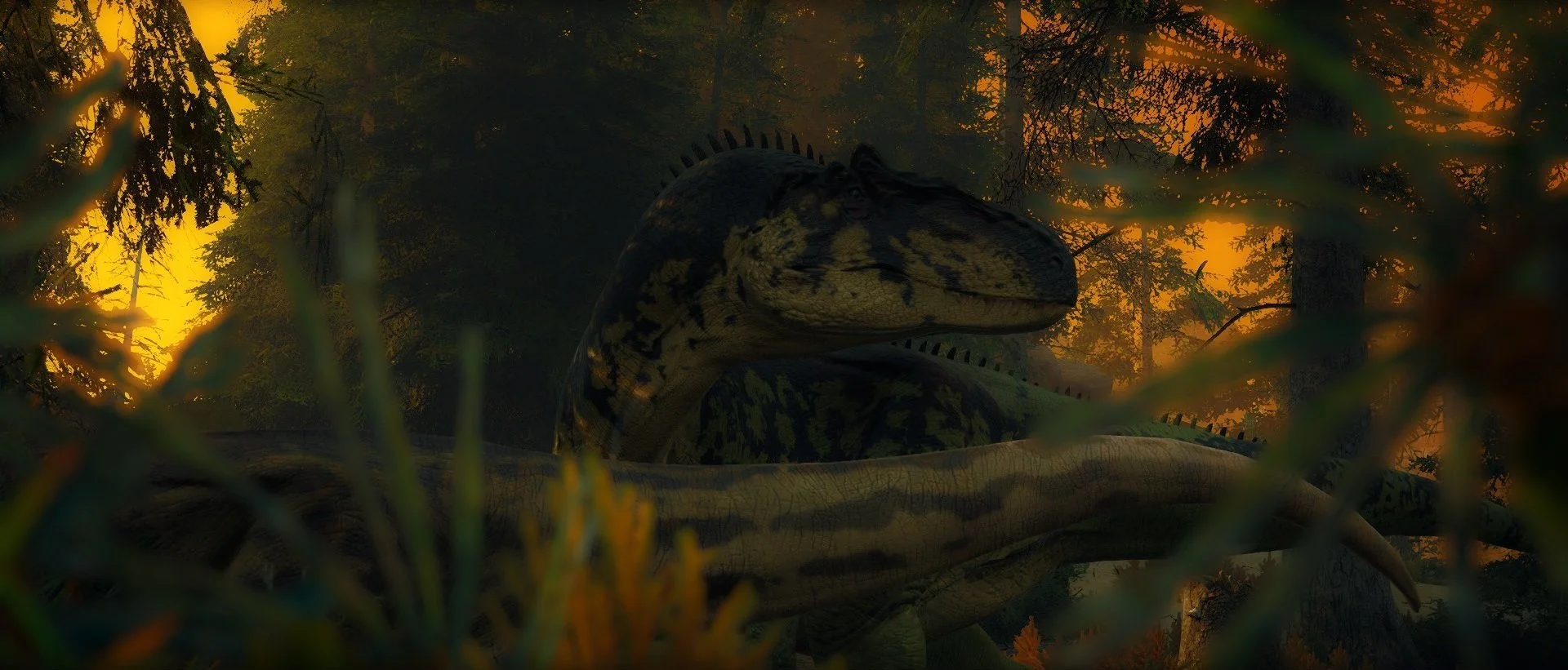Mosasaurus
Tier: 6
Type: Aquatic carnivore
Passive growth time: 5 hrs 58 min
Pod size: 3 sub adults/adults, 1-3 juveniles/adolescents
Hierarchy: Matriarchal
Mating bond: Polyandry
Nest size: 1-2 offspring per pair
Diet tags: Piscivore, carnivore, semi-cannibalistic & non-scavenger
Preferred food: Fish, Tier 1-7 herbivores & carnivores
Species specific rules: Must contest other aquatic apexes for the body of water in the POI. Can only cannibalize when they have a group of 2 or more.Behaviors in nature
Mosasaurus are commonly found in open waters, often swimming near the surface. These highly efficient swimmers are capable of swiftly achieving high speeds, allowing them to efficiently capture prey with precision. With their immense jaws, razor-sharp teeth, and remarkable eyesight, they are regarded as the top predators of the oceans. Their hunting techniques are enhanced by their territorial nature, as they claims large sections of the ocean as their own and thoroughly patrolls them. Mosasaurus possess exceptional memory, revisiting previously explored areas for both hunting and nesting purposes.
Social behavior
Mosasaurus are generally solitary creatures and have limited interactions with other Mosasaurs. They recognize each other through visual and acoustic cues, and can remember past interactions based on the frequency of calls and body language. When encountering another Mosasaurus, these large reptiles assert dominance and power by displaying their open jaws and emitting deep rumbling sounds. While rare, Mosasaurus pods can form if certain social dynamics are met. Typically, a dominant female leads the pod, accompanied by one or two males. The dominant female determines the pod's hunting locations and migration patterns. Dominant pods establish control over successful hunting areas and actively drive out competing pods.
Recommended behaviors
╸Mosasaurus are specialized to hunt plesiosaurs, giant turtles, sharks and even other Mosasaurus.
Courtship
Once a lone female Mosasaur has reached sexual maturity and is ready to mate, it will expand its original hunting territory to enhance its chances of encountering a male. Unlike the females of the species, solitary males will travel significant distances and abandon their usual hunting grounds in search of a mate. When a lone male happens to encounter a lone female, the two will evaluate each other, taking into consideration physical appearance and overall health. If the male's appearance impresses the female and she desires to mate, she will venture into deeper waters with the male close behind. After mating, these two Mosasaurus will remain close for a brief period, hunting and feeding together. Most Mosasaurus groups form after mating occurs. If the appropriate social dynamics are not established within these two individuals, they will go their separate ways. Within a Mosasaurus group, the dominant female will engage in mating with the males within the group.
Nesting & offspring
The gestation period for Mosasaurus females is around 5 seasons before they give birth to live young. While females do not exhibit specific nesting behaviors, they instead seek out a sheltered rock structure. The birthing process typically occurs at night, when other predators are less active. Mosasaurus are independent creatures right from birth, displaying natural instincts to navigate the depths of the ocean. Offspring will stay with their mother for only a brief period of a few days before separating completely. Young males typically form a group until they reach late adolescence, unlike the females who prefer a more solitary lifestyle. These males eventually separate to find a suitable mate on their own.




